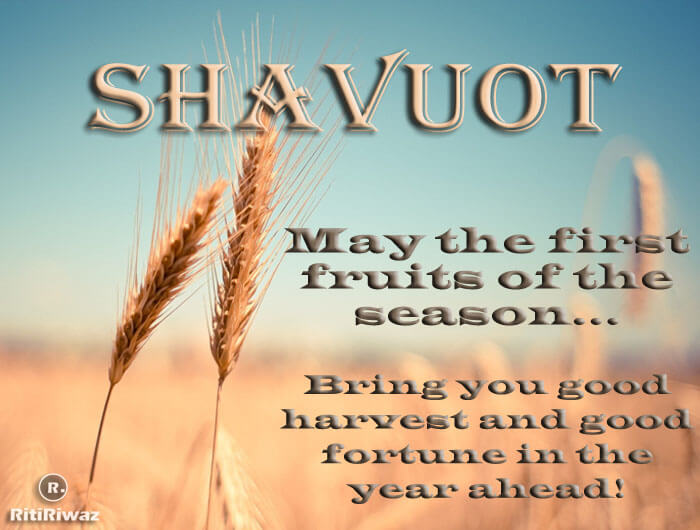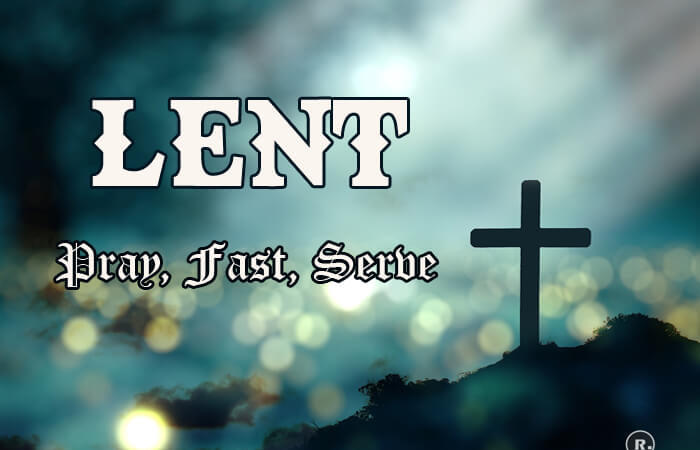Shavuot Festival

Shavuot (the Festival of Weeks) is one of the pilgrimage festivals celebrated on the 6th day of the Hebrew month of Sivan, which is generally between May 15 and June 14. In Christian tradition, it is known as Pentecost. However, it’s important to note that Shavuot has no particular relation to the Christian holiday of Pentecost, which occurs 50 days afterward.
Shavuot is one of the three pilgrimage festivals described in the Torah (Five Books of Moses), the other two being Passover and Sukkot. In Hebrew, the word “Shavuot” means “Feast of Weeks,” and stands for the seven weeks during which the Jewish people prepare themselves for the giving of the Torah. The name, therefore, reflects the fact that this holiday occurs seven complete weeks (Shavuot) after Passover. In mystical terms, the number 7 represents the natural order of things, and so a complete, natural cycle has occurred.
Shavuot is the holiday that celebrates the moment when the Jewish people stood before God at Mt. Sinai and received the Torah. Shavuot is celebrated in Israel for one day and in the diaspora (outside of Israel) for two days.
It begins on evening of Tuesday, June 11, 2024 – Thursday, June 13, 2024.
Shavuot History
Shavuot, like so many other Jewish holidays, began as an ancient agricultural festival, marking the end of the spring barley harvest and the beginning of the summer wheat harvest. Shavuot was distinguished in ancient times by bringing crop offerings to the Temple in Jerusalem. Recognizing that Shavuot has both agricultural and religious roots, the holiday is known by several different names: Shavuot, Z’man Matan Torateinu, and Chag HaBikkurim. Z’man Matan Torateinu translates as “the season of the giving of our Torah”; and Chag HaBikkurim means “the festival of first fruits”.
It also coincides with the time, over 3000 years ago, when God gave the Jews the Torah on Mount Sinai. The Torah is the first part of the Bible (Genesis, Exodus, Leviticus, Numbers, and Deuteronomy). Moses led the Jews out of slavery and was given laws to live by. These were the books of Moses, also known as the Torah.
The Torah tells us it took precisely forty-nine days for our ancestors to travel from Egypt to the foot of Mount Sinai (the same number of days as the Counting of the Omer ) where they were to receive the Torah. Thus, Leviticus 23:21 commands: ‘And you shall proclaim that day (the fiftieth day) to be a holy convocation…’ The name Shavuot, ‘Weeks,’ then symbolizes the completion of a seven-week journey.
Why should we continue to count the days and weeks between Passover and Shavuot today?
An agricultural reason: During the times of the ancient Temple, this was the season of the ripening of grain in the field. Special grain offerings were brought and waved in different directions, as the lulav is waved during the holiday of Sukkot, to demonstrate the all-encompassing divine presence. It is a season when hot and dry winds can destroy crops. The wind is called hamsin in Israel and is related to this 50-day (chamishim) season when farmers look to the sky in fear and anticipation. Today, climate change has us looking to the sky with awe and trepidation, and asking questions about what season we are in. Counting keeps us mindful of nature’s power.
A Jewish historical reason: We still count these days without a Temple in Jerusalem to demonstrate our thrill for the impending occasion of receiving the Torah, celebrated on Shavuot. Just as a child often counts the days until a birthday or an upcoming family vacation, we count the days to show our excitement at again receiving the Torah through continued reading and studying. This serves as a reminder that we should renew our commitment to the Torah’s wisdom every year.
A spiritual reason: We can use this period before the anniversary of receiving the Torah to spiritually prepare and refine ourselves. In kabbalah (Jewish mysticism) each of the 49 days of the Omer represents one of the combinations of the Sefirot (divine emanations) and in a Kabbalistic prayer, the worshipper entreats God to help him or her lead a pure life and pardon them for any behavioral flaws. We can see this as a 49-step program that clarifies our behavior and resets our moral compass.
How Is Shavuot Celebrated?
During the two-day festival, the Jewish community comes together to celebrate the Torah and the start of the grain harvest. Shavuot is unlike other Jewish holidays in that it involves no prescribed commandments other than the traditional festival observances of prayer services, abstention from work, and holiday meals. However, it is characterized by many customs that have taken on the force of law in traditional Jewish circles.
During the times when the Temple stood in Jerusalem, Israelite men made pilgrimages to this city, bringing with them their offerings of the first fruits from their harvest. Today, in addition to abstaining from work, there are certain prayers and traditions associated with our modern commemoration. It is also a tradition to only eat dairy on Shavuot, although some Jewish communities, such as Jews from Yemen, do eat meat during this holiday.
It is traditional in many congregations for members to get together all night and study Torah and other Jewish-focused subjects. In many Reform congregations, confirmation for both male and female teens takes place at this time. It’s the custom to wear white to go to the synagogue and to share a family meal. Shavuot is an opportunity for the farmers to show off their crops and share the fruits of their farming labor. Traditionally, dairy dishes are served on this holiday to symbolize the sweetness of the Torah, as well as the ‘land of milk and honey.’






